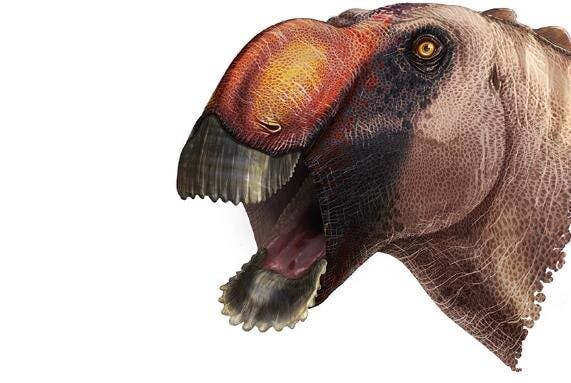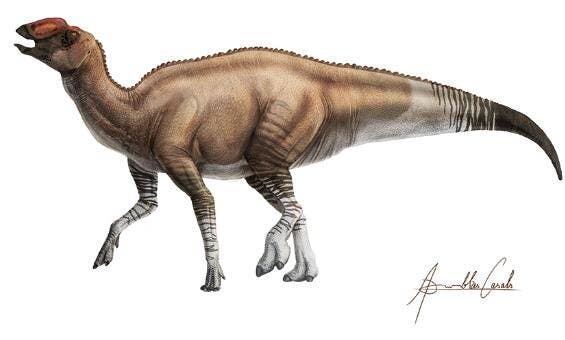Paleontologists have recently described a weird looking 80-million-year-old dinosaur with an “eagle-nose” and “shovel-chin”. The dinosaur is one of the earliest hadrosaurs, also known as duck-billed dinosaurs, found thus far.
The skull and partial skeleton of the specimen were first discovered in the 1980s, in Texas’ Big Bend National Park. However, it was only recently that paleontologists at the Catalan Institute of Palaeontology Miquel Crusafont in Barcelona, Spain, analyzed the duck-billed herbivore in more detail.
Around the time of its discovery, other researchers posited that the dinosaur’s skull and characteristic nasal crest belonged to another hadrosaur, called Groposaurus. The new analysis, however, shows that while the dinosaur had a bony crest on its skull, just like many other hadrosaurs, it also had unique, shovel-like jaws. For instance, the lower jaws of the dinosaur meet in a peculiar W-shape, creating a wide, flattened scoop.
Writing in the Journal of Systematic Palaeontology, the team of paleontologists reports that the specimen belongs to previously unreported new species of crested dinosaurs and that it does not fit with the main group of duck-billed dinosaurs known as Saurolophidae. The authors unceremoniously named the dinosaur Aquilarhinus palimentus, where “aquila” means eagle in Latin and “rhinos” means “nose” in Greek, whereas “palimentus” combines the Latin words for “shovel” and “chin. In other words, the Catalan paleontologists literally called the dinosaur Eagle-nosed Shovel-chin. Take that, T. rex!
Since A. palimentus has more primitive features than its subsequent cousins, the researchers think that their study might offer new clues as to how the group’s crests evolved. Some scholars believe that the nasal crest helped hadrosaurs identify members from the group and compete for mates. The scooping chin was probably useful more than 80 million years ago when Texas used to be a marsh. Aquilarhinus‘ jaws must have come in handy for scooping vegetation from the bottom of the muddy creek bed.

The dentary of Aquilarhinus, showing the unusual upturned end of the mandible. Credit: Albert Prieto-Marquez.
Hadrosaurs were mostly found in Europe, Asia, North and South America, and Antarctica during the late Cretaceous period. However, such a primitive specimen supports the idea that hadrosaurs first appeared in the southern part of North America.
“This new animal is one of the more primitive hadrosaurids known and can therefore help us to understand how and why the ornamentation on their heads evolved, as well as where the group initially evolved and migrated from,” says lead author Dr. Albert Prieto-Márquez from the Institut Català de Paleontologia Miquel Crusafont, near Barcelona. “Its existence adds another piece of evidence to the growing hypothesis, still up in the air, that the group began in the southeastern area of the US.”











